NOTE: This post was significantly updated at 5:01 pm.
First of all, this memo would not exist if not for BikePortland. This plan to remove the diverters and re-establish NW Johnson at 15th and NW 20th at Everett as two-way streets for drivers (they are currently one way for drivers and two-way for bicycle riders) was slated for implementation without any public notice. Since I intercepted an internal email on August 1st, the community’s resistance to these plans has forced the City of Portland to delay and think twice.
The memo, which was released publicly today at 12:00 noon, was written by City Administrator Michael Jordan (at right). I hoped it would add more clarity, but it has only created more questions. CA Jordan essentially doubles-down on the city’s positions and plans.
With that, here are my thoughts now that I’ve had more time to absorb the memo, followed by a few questions the community still deserves answers to…
Origin of concerns still unclear
CA Jordan did not provide any verifiable evidence about where the “community concerns” they heard about the diverters initially came from. This is a problem because if we can’t verify the origin of these concerns, what is to prevent the Portland Police Bureau, Portland Solutions (the city office that is leading this plan), the Public Environment Management Office (PEMO, a program under Portland Solutions), or any other city office or agency from simply claiming concerns about something in order to create a narrative that forces a certain outcome?
PEMO meetings in violation of public meeting laws?
One reason CA Jordan might not be able to provide this information is because PEMO (the office that hosts “Problem Solver” meetings where business owners, police officials, and residents reportedly shared concerns about the diverters) does not hold public meetings.
Despite being a city office that has influence on City policy and implements its recommendations, PEMO does not make their meetings public. I have confirmed with the City of Portland that PEMO does not keep meeting minutes, meeting agendas, or a list of attendees. I am currently aware of Portlanders who are considering legal action due to this possible violation of public meeting laws. (UPDATE, 8/13: I spoke about this concern with City Councilor Sameer Kanal Tuesday night and he said the Problem Solver meetings are not in violation of state public meeting laws but that their lack of public access is a concern that councilors are looking into.)
Emerson School, really?
The memo lists several business and organizations they claim have been negatively impacted by “public safety” in the corridor around NW 20th and Everett. One of them is the Emerson School, which the memo states, “relocated due to safety concerns.” But the Emerson School didn’t move primarily due to safety concerns. They were renting a temporary space and they moved into a larger space. This is just one example of how Portland Solutions and CA Jordan are trying to build a case with squishy evidence.
(Safety concerns at Couch Park are another stated rationale, but as I reported Saturday, the President of nonprofit Friends of Couch Park is against the diverter removal.)
PBOT didn’t support the plans initially
One of the most interesting things in the memo is how CA Jordan describes PBOT’s initial reaction to their concerns. The memo says that PBOT was approached with the plans and their first response was to do nothing and keep the diverters in place. “However, given the increased access needs and the broader awareness of the extent of the public safety-related issues,” the memo reads, “PBOT ultimately recommended the second option [to remove the diverters].”
The city’s plans make the road more dangerous for bicycle riders and pedestrians
Despite the memo’s claim that the plans, “preserve safe bike and pedestrian access,” it’s a fact that changing a street from a carfree lane to a sharrow-marked lane will make it less safe for bicycling and walking. Portland does not have any adopted city policy or goals that support a change that would make a street more dangerous for bicycling and walking.
What’s perverse about all this is the memo acknowledges that the diverter has reduced crashes. In the five year period prior to its installation there were nine crashes. In the four and-a-half years since they went in there have been three crashes.
About those new stop signs on NW Everett
The plan calls for a new set of stop signs on NW Everett at 20th. This will be the only stop on this stretch of Everett between NW 23rd and NW 19th. And given that Everett is a high-volume neighborhood collector and NW 20th a very minor, residential street, any traffic engineer will tell you there is likely to be very low compliance for these stop signs. In that context, the addition of stop signs and the false sense of security they might provide some road users, could actually add to safety problems at the intersection.
PEMO’s mission statement
PEMO is currently hiring three new staffers to implement plans like these. In that job listing, they state their mission as, “activating public spaces” and, “public space activation to promote economic vitality, community safety, and community use.” There is no precedent for trying to achieve those goals by adding more drivers and cars to a street. In fact, increasing car traffic volume has the opposite impact — which is why all of Portland’s adopted planning documents tell city planners to reduce car use as much as possible.
Some of my remaining questions:
- Will these changes be framed as temporary or a “pilot” from the get-go? If so, what will the metrics for success or failure be?
- Why are PEMO Problem Solver meetings not public? Are any changes planned to make sure they follow public meeting laws?
- If they’ve been working on this plan for 2-3 years, why did they never think to run the idea by City Council, PBOT, or the Bicycle Advisory Committee until now (which remember, is only happening because of public scrutiny)?
- Does CA Jordan and Portland Solutions think these changes will make the street safer for bicycle riders and walkers? If so, can they explain how?
- Did PEMO ever consider just keeping the one-way for drivers and training officers to go around it if/when necessary?
- Are there other neighborhood greenways around Portland that have come up at these Problem Solver meetings? If so, which ones and are they slated for changes too?
I’m off to the Bicycle Advisory Committee meeting. For more on this memo, I highly recommend perusing the amazing and insightful comments over on my previous story.

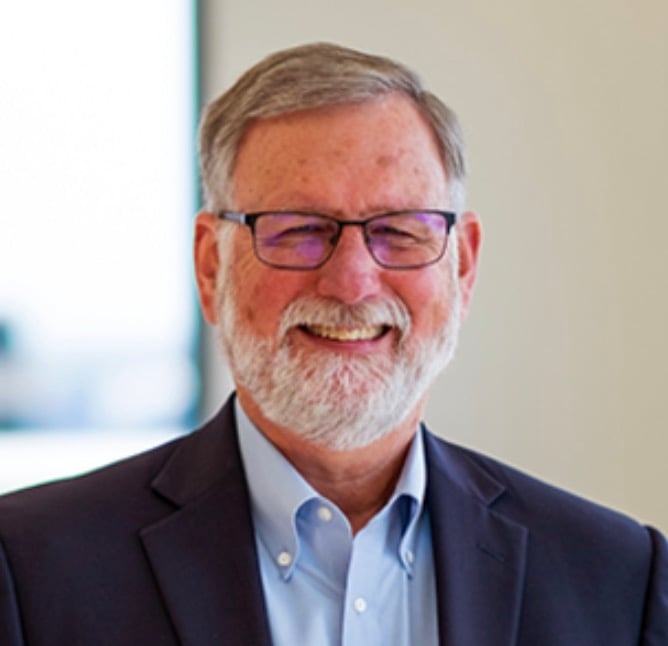
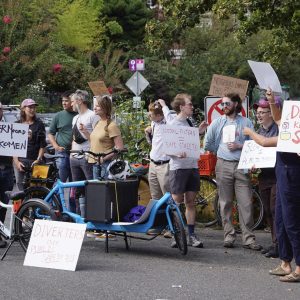
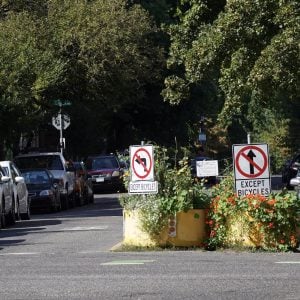
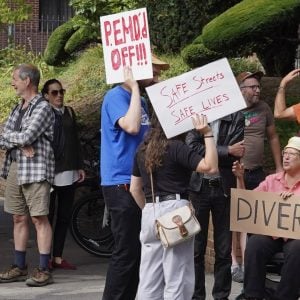
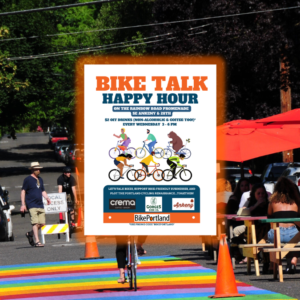
Thanks for reading.
BikePortland has served this community with independent community journalism since 2005. We rely on subscriptions from readers like you to survive. Your financial support is vital in keeping this valuable resource alive and well.
Please subscribe today to strengthen and expand our work.
That was really good Jonathan, smoking hot. it’s clear you’ve been giving everyone space to work this out, maybe save a little face, and I agree with you that the Mayor and CA don’t seem to appreciate how much community support and time have gone into all the “in Motion” plans. It’s almost like they don’t know the recent history of their own city. ( and by “recent” I mean, when did EPIM get started? 15 years ago?)
You made a great point at around 9 minutes in your video that this situation is a big test for our new form of gov’t. The City Council should be making policy that the bureaus (PBOT, PPB etc) carry out. If the council wants active transportation, safe streets etc, then diverters are a logical expression of the council’s desire. But for a shady office like PEMO, on the admin side, to come in and do an end-around the council is clearly not what’s supposed to happen. It’s very much the old, backroom-dealing Portland that we voted out. I hope Mayor Wilson and PEMO come to realize how much damage – just on a credibility level – taking out the diverters will cause.
Thanks for putting this together. I’m shocked that a city office can just roll in and overturn projects that are crafted by city planners, vetted through public engagement, and officially adopted by city council with no public process. This is the kind of BS that is currently happening as standard operating procedure at the federal level. I sure hope it doesn’t become a regular thing here in Portland. City council should be up in arms that the Mayor and city administrator are just totally bypassing them on this. It is their purview to make policy or overturn existing policy, not Mike Jordan’s. The mayor is not a king.
Well, the city administrator reports to the Mayor and the bureau chiefs report to the city administrator. Councilors can set policy and presumably leak memos. But it would appear, in our new form of government that the Mayor has the power to do things more quickly than the councilors can.
You talked about the precedent this could set, and how cranky people could start expressing “safety concerns” about their least favorite diverter to get it removed. Another way to look at it, is that if i the future, the supposed “bicycle mafia” gets in control of PEMO, couldn’t they then make sweeping changes on car routes with zero public engagement or notification?
Whataboutisms are not useful. We have real disruptive action on our bike network happening as we speak. Diverters take months and in most cases years of advocacy work to make happen. Undoing the diverters at the whim of an office that does not have transparency is not good government.
It isn’t whataboutism, you’re using that concept incorrectly.
The point is they don’t want to set this precedent, because using that precedent, a bike friendly administrator or mayor can do the same thing. Make pretextual excuses (actually, just use real safety justification) and remove a bunch of parking to put in a protected bike lane with no public engagement.
That’s just what setting a precedent means, it isn’t whataboutism.
I think it’s unlikely that PEMO would ever be taken over by safe streets advocates and make “sweeping changes” to effect their agenda. First: it’s not the purpose of the group.
Second, I think this whole episode has illustrated the dogged power of status quo bias. Just as in the Broadway debacle, we see a years-old change in the direction of safer streets threatened by the preferences of longstanding civic powers (neighborhood associations, business leaders, police bureau).
In each case, while transportation activists have enough clout to give PBOT political clearance to make the street slower/safer, in the following years, the change still rankles people in the neighborhood, and they gradually amass forces to effect a RETVRN to the previous, less safe, street design.
It reminds me of mountain bike access: there’s a tiresome two-steps-forward-one-step-back playbook at work, in which activist momentum is threatened by a slow, but inexorable buildup of NIMBY grumbling.
It’s a democracy, so people are allowed to grumble! They’re allowed to prefer faster, less safe streets.
My main disappointment is that we have this PEMO office to address the drugs/psychosis/housing polycrisis, and they seem to have been dragged or diverted, through a laughable, weakly justified argument, into directing the rollback of an effective traffic safety project.
Removing the diverters won’t solve the problems at Couch Park, but it will divert political and monetary resources away from actually solving the problems that PEMO is intended to solve.
Park a cop in the middle of the Park! Play classical music on loudspeakers. Allow cops to drive around the diverters. Put cops on e-bikes. Put cops on motorcycles. Arrest drug dealers! Lean on the state to provide public defenders. Start calling out judges who release violent offenders. Build another jail.
This $#*+ is the problem. Not some damn traffic safety barrels.
Removing the diverters is a lazy “look busy” fake solution to a problem. It’s a way to pretend they did something to address the problems without having to really do anything.
let’s not be silly here – if that happened, the conservative elements of town would scream bloody murder and that arrangement would be scuttled in a heartbeat
The “supposed “bicycle mafia?””
Oh my god, I think I just sprained my eyeballs.
Jonathan, thanks again for your continued coverage of this matter. I’m glad I took the time to visit both NW intersections when I walked to and through downtown on Saturday. Thanks also to those at the NW 20th and Everett intersection who answered my questions about PEMO’s authority and related issues.
I agree with your closing comments that removing the diverters could set an awful precedent citywide.
Thanks for this, Jonathan. I agree that this could set a very bad precedent and let well-connected folks around town know that they can bypass all the normal processes if they bring their complaints to the shadowy PEMO. Another question I have: what else has PEMO done around town without any public record or input?
PEMO is working as Wheeler designed – a layer of bureaucracy that trumps everything, at the diirection of the mayor.
“This is just common sense. It puts one centralized command structure over 20 city programs and eight bureaus, that are currently managed by five different city council members,” Mayor Wheeler, May 6 2022.
It was specifically set up to do the mayor’s bidding if ‘public safety’ was at issue… and guess who gets to determine what is a ‘public safety’ issue.
The fact that this 2022 Energency Declaration was not terminated first thing he sat at his desk means Wilson intends to USE it as designed. I have warned a few councilors they will live to regret allowing this usurpation of their authority to go unchallenged (see US Congress). If Wilson wants to do this, whether it’s a sop to NWDA and Classen et al to get them to stop fighting a shelter, trying to keep Stadium FM, PPB, whatever – Wilson should have done this in the open and taken blame as well as credit. I’m sure he gains just as many NW voters as he will lose cyclist ones, but everyone will see that he is untrustworthy.
PS – Hey Ted – “this is just plain common sense” to sneaky little shits like you, but not to the rest of us. That Wilson agreed with you means he has lied about his character while campaigning.
I wonder if all of these meetings were a way to circumvent lobbyist reporting or other important ways of tracking influence in local government.
For example:
All of these meetings with Michael Jordan don’t seem to show up on official reports.
https://bigblinkpdx.org/people/117?page=9
https://www.portlandoregon.gov/auditor/lobbyist/reports.cfm?action=Reports&reportType=advanced&advancedEntity=&advancedOfficial=470&advancedSubject=&advancedQtr=&advancedYear=&submit=Search
Or Skyler Brocker-Knapp
https://bigblinkpdx.org/people/34
Not sure I’m a fan of the PDX shadow government. Happy to be proven wrong or be better informed about government transparency policy.
I really appreciate the reporting on this. It’s a huge fumble for city leadership, and one they obviously wanted to slide under the radar. Fortunately that hasn’t happened.
Also if they are gonna be doing stuff like this where traffic safety is sacrificed to facilitate PPB patrols, ideally PPB should bear the cost of the removal rather than PBOT.
They should bear the costs of removal and replacement of equivalent or better facilities.
“consider just keeping the one-way for drivers and training officers to go around it if/when necessary?” Almost did a spit-take reading this. I’m guessing your tongue was firmly in your cheek when you wrote it…
“Why are PEMO Problem Solver meetings not public?”
PEMO is not a decision making body like city council is. Imagine you and a small number of other cyclists wanted to meet with PBOT officials about bike issues and they sent three engineers and invited a police officer to talk with you. Would that meeting have to be public? No. Now imagine that meeting recurring on a regular basis. Still not a public meeting.
That’s essentially what the PEMO problem solver meetings are as I understand them; a way to get people into the same room to quickly resolve immediately solvable liability issues like cleaning up trash, fixing lighting, or dealing with a problematic RV.
Ever dealt with an RV through normal channels? Online reporting, scoring matrices, black hole. These types of problems are enormously frustrating when you are stuck with them and feel like no one at the city is listening, and these meetings are a way to get quick results for people. Regular people.
I don’t know how the diverters played into this, but they likely came up in the context of trying to figure out how to address an acute crime issue.
There’s been a lot of conspiracy talk on this forum about what these meetings are, but I think it really is as simple as that.
Ideally, we wouldn’t need these meetings to work around a lethargic and morale sapping city bureaucracy that eats money and sits on it’s hands until forced into action.
That’s the Portland malaise the peacock folks should be working on fixing.
PS The way to resolve the diverter problem is to meet with PBOT and the cops, get a better understanding of the issue, and brainstorm solutions. Be problem solvers.
This happened, under Northwest-in-Motion. Over years.
The issue is that automobile traffic caused safety issues. The diverter was the solution to that problem. Again, discussed and talked about for years.
The problem was solved. Why is PEMO being a problem creator?
The diverters solved one problem, now there is a new one. Playing rhetorical games with me is not going to save the diverters.
The problem solver meetings are official city meetings run and organized by a city office with members of the public, and the results of these meetings clearly have some impact on city policy. Why would they NOT be public? If you think vague problem solving rhetoric or getting things done means we should skirt oversight and public records law, I don’t know what to say to you. It’s shameful and dumb, and people are right to be upset about it
I don’t think open meetings law applies here. I could be wrong, and if I am, one of the legal challenges Jonathan mentioned may succeed.
See for yourself: https://www.oregon.gov/biz/Publications/TWG%2520Public%2520Meetings%2520Law%2520Summary.4.22.22.pdf
404 Error, but I got you fam. ORS 192.610(5) defines a governing body as “the members of any public body which consists of two or more members, with the authority to make decisions for or recommendations to a public body on policy or administration.” ORS 192.610(6) defines a public body as “the state, any regional council, county, city or district, or any municipal or public corporation, or any board, department, commission, council, bureau, committee or subcommittee or advisory group or any other agency thereof.” Finally, ORS 192.610(7)(a) defines a meeting as “the convening of a governing body of a public body for which a quorum is required in order to make a decision or to deliberate toward a decision on any matter.” And the basic public meeting requirement is stated in ORS 192.630(1): “All meetings of the governing body of a public body shall be open to the public and all persons shall be permitted to attend any meeting except as otherwise provided by ORS 192.610 to 192.705.”
So the big question is whether PEMO or any of the other stakeholders with decision- or recommendation-making power on the removal of these diverters is a public body for the purposes of ORS 192.610 to 192.705. I agree that it’s a gray area, and a lot of that comes from how opaque this decision-making process is. Regardless, I submitted a public meeting grievance to the City Attorney’s office yesterday, which is step one in trying to force the city to explain themselves publicly and allow general public input. At the very least, the City Attorney will have to explain on the record how these meetings were not meetings of a governing body of a public body, which can then be challenged and investigated by the Oregon Government Ethics Commission.
If PEMO can treat important traffic safety infrastructure that is used and appreciated by many Portlanders the same as a meth-cooking RV then they have far exceeded their scope and all of their meetings should be part of the public record and they should have the added responsibility of creating broad public involvement as soon as any interventions are proposed. Or, whichever agency will act should start from the beginning with public involvement that is on the record. Have we forgotten that the Broadway Bike Lane debacle was fueled by a some rich guys that had a direct line Mapps, and thought their feelings were more important than a vital piece of infrastructure?
This isn’t a conspiracy. Jordan cites these meetings as evidence to make a major change, but this evidence is not verifiable or able to be assessed.
The question of open meetings has nothing to do with whether traffic infrastructure can be treated the same as an RV. It has everything to do with how open meetings law defines a public body. Michael made a thoughtful response above that engages with the actual facts.
The issue here is that these aren’t like squater RVs that need quick attention and resolution; these diverters are city infrastructure that took years to get in place to create a safer commute for pedestrians, cyclists, and, though they hate to admit it, autoists alike. The data proves that they are successful in achieving that.
What the data does not prove, or at least what has been presented thus far, is that they create an obstacle to policing the area.
If the infrastructure needs to be updated, altered, removed, etc, the proper channel is the bureaucracy, and including the community affected. None of this was done, and it was unilaterally decided to remove the diverters. Thankfully, that was paused last night by the mayor through the pressure of the community, the council, and when he may have finally realized this was not a good look.
I suspect if PEMO, PBOT, and the police invited the community leaders to these same meetings/walkabouts, we wouldn’t be having this type of discussion.
“What the data does not prove, or at least what has been presented thus far, is that they create an obstacle to policing the area.”
They had input from experts.
The real question we should be asking is how do we address the policing issue while preserving the benefits of the diverters. Because if it comes down to traffic safety versus addressing street crime, I know which is going to win.
“They had input from experts.”
Public meeting law does not only apply to “decision-making” bodies it also applies to advisory bodies:
https://www.doj.state.or.us/oregon-department-of-justice/public-records/public-records-and-meetings-law/
More interesting to me is the lack of attendance records, and minutes given that public records have even more stringent requirements:
For example, Neighborhood Associations have to file minutes, and post meetings and agendas. So does the BAC.
NAs comply because of city requirements and bylaws. They are not governmental bodies in any way, and are not covered by Open Meetings Law